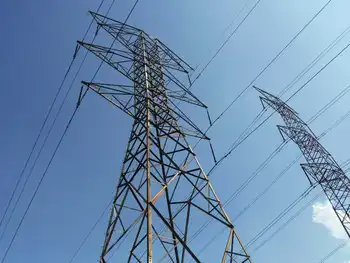RussiaÂ’s carbon credit bank seen as a barrier
By New York Times
CSA Z463 Electrical Maintenance
Our customized live online or in‑person group training can be delivered to your staff at your location.

- Live Online
- 6 hours Instructor-led
- Group Training Available
That is because Russia, as a result of the collapse of much of its heavy industry in the 1990s, owns one of the largest stocks of credits to offset carbon emissions.
The unearned windfall, a legacy of the Kyoto agreement that tried to deal with the threat of climate change, is worth several billion dollars. If abruptly sold abroad, those credits could send the price of carbon on the worldÂ’s fragile emissions markets plunging toward zero.
Without a predictable and reasonably high price for carbon emissions, most economists say, there is little prospect of setting in motion the many investments needed to shift from a carbon-intensive industrial economy to a more sustainable energy base in developed and developing countries alike.
Carbon trading is mainly based on permits that are issued or sold by governments to companies that emit carbon dioxide and other gases that are believed to affect the climate. The companies are required to buy permits, or seek credits elsewhere, if they emit more than a specified amount of carbon. They can profit by selling their permits for cash if they come in below their cap.
As governments lower the overall caps, the prices for permits and credits should rise. Supporters of carbon trading say that the system is working when companies facing high-cost permits cut their output, invest in cleaner technology or buy emissions credits from a company or organization that has taken actions to reduce emissions or absorb greenhouse gases from the atmosphere.
The main model for such a system already operates in the European Union, which has called on all industrialized countries to have systems in place by 2015 and for rapidly emerging economies like China and India to adopt them by 2020. A similar system is being debated in the United States.
But even if a global market develops, many experts warn that carbon trading should not be relied on to deliver the scale of emissions cuts needed to keep the rise in global temperatures within a range that scientists say would prevent dangerous changes.
Environmental groups warn that carbon markets may end up providing only a fraction of the money some poor countries expect, largely because wealthy countries are not willing to set their caps stringently enough. Tougher caps would push up demand for more offsetting in the developing world. That, the theory goes, should raise the price of carbon, so that governments selling permits would have more money to redirect to a future global climate protection fund.
The prospect of Russia dumping its credits is just the latest challenge facing emissions trading, the expected financial backbone to any global agreement that may emerge from the talks taking place in Copenhagen over the next two weeks. The hoard of Russian credits is a “gorilla sitting in the background” that “nobody dares to touch,” said Peter Zapfel, a senior official who helps to oversee the European Union’s four-year-old emissions trading system.
Russia could “fundamentally affect the environmental integrity of what we agree to at Copenhagen,” he said.
Industrialized countries, including the United States, are counting on trading as the most inexpensive and efficient way to help meet future emissions targets intended to limit the carbon pumped into the atmosphere.
European leaders, meanwhile, have emphasized the role any trading project should play in channeling the large sums of money that poorer countries have demanded as a condition for a deal at Copenhagen.
Henry Derwent, the president of the International Emissions Trading Association, an industry group based in Geneva, predicted that an emissions market could be worth $3 trillion by the end of the next decade, compared with about $130 billion a year now.
In a number of countries, however, powerful lobbies, often backed by the coal industry, have blocked efforts to pass legislation to cap emissions. And where such systems have come into existence, particularly in Europe, the low prices and volatility in carbon markets have spooked investors rather than encouraged them to invest in clean energy.
There are also serious doubts about the way reductions in greenhouse gases can be earned, traded and managed, reinforcing the view that carbon markets may turn out to be just another Wall Street gambit.
“I do think that carbon markets have an important role to play,” said Nicholas Stern, a professor at London School of Economics and one of the world’s leading climate economists. But “all markets have to have some kind of regulation and rules in order to function properly,” he added. “We’ve surely seen that in the last few years — and this surely is one of them.”











